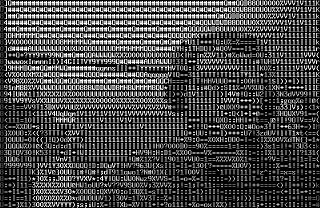“I suggest _cooperating_ with “the enemy” as much as possible. IU may be able to give lots of hints and ideas regarding support at an Indiana university. The Linux community is very open and and sharing… …Linux appears to be a trend, not a fad. How long would Purdue like to trail IU? I urge you to fund the proposal today so the Linux evaluation can be done this semester.”
– Mark, Purdue Linux Users’ Group (PLUG), Jan 31, 1999
Ten years ago, when the Qt-based KDE 1.0 was still fresh and buggy and GNOME didn’t even have a stable release, Indiana University was already earning the envy of other reputable universities due to its savvy deployment of free and open source software.
As Richard Knepper tells it, “Linux has been in use at IU since well before I showed up here in 1999, when I joined up with IU’s University Information Technology Services.” Richard is the Research Technologies Core Services manager at Indiana University in Bloomington. Though Linux was around IU prior to his arrival, he has witnessed and participated in major software transitions during his tenure. Indiana University has effectively and significantly phased out proprietary applications and operating systems in order to make way for Linux and open source software solutions, and its story provides other large institutions with an example, if not a roadmap, of how to most wisely invest in technology infrastructure.
| Back in 1999, Knepper was working UNIX workstation support, and IU maintained contracts with Sun, SGI, HP, and Compaq for proprietary UNIX, so that faculty, students, and staff could use proprietary UNIX as a server, as well as a desktop, operating platform. In those days, IU web servers were Apache on Tru64 (old DEC UNIX, now discontinued), mail relays were Berkeley Sendmail on Solaris, and the mirror was running Solaris, too. |  IU’s Richard Knepper is really immersed in his work. |
In addition to providing technology services to more than 40,000 students and faculty, Indiana runs a public open source mirror service that offers many popular Linux distros, Mozilla Foundation software, and other popular open source software collections, such as Apache, GNU, CPAN, and OpenOffice.org. While the technology services staff members at IU worked to reduce the scope of the existing contracts with proprietary software vendors, they also advocated for more widespread adoption of Linux-based operating systems. In addition to switching the web and mail infrastructure to Linux-based systems from UNIX, which is no picnic in one of the largest public universities in the United States, IU continued on the Linux track by abandoning some proprietary solutions in favor of open source software and porting some of the old proprietary software to Linux.
In fact, although some projects have taken longer than others, the technology team at Indiana has yet to consider an attempted migration project unsuccessful. According to Knepper, IU has effectively phased in Linux so that it no longer maintains contracts for HP-UX, Tru64, or IRIX. Not only does the transition away from proprietary legacy operating systems lead to reduced licensing expenses, but it also helps both the research technology services department and the university by shifting away from proprietary knowledge and skills.
Finding good help at Indiana, however, probably isn’t very difficult. Technology at IU got a major boost in 1999, when the university opened its School of Informatics. With the advent of its Informatics school, IU set out to discover “how people transform technology, and how technology transforms us.” Although the academic programs available through the School of Informatics generally relate to technology abstractly, informatics and computer science students use Linux extensively in their studies, but so does the Kelley School of Business. And so does the IU Department of Theatre and Drama.
 |
In fact, Indiana University will likely remain a Linux hotspot indefinitely due to a home state technology grand program called Indiana ACCESS–Affordable Classroom Computers to Every Secondary Student–which makes Linux-based workstations, providing younger students a level of early experience unparalleled in the United States. IU has already successfully leveraged open source technology to expand and enhance its offerings, and Indiana’s public schools embracing Linux-based operating systems can only improve the Hoosiers’ standings in the international ecosystem. In terms of technology exposure, the state of and university system in Indiana are setting attainable examples that could help other states and schools control their budgets while improving education and access to technology. |
Despite the recent support for Linux in public schools statewide, however, Knepper has not yet seen that commitment to open source directly influence decision-making at IU. He believes most Linux adoption has been driven by the more well-known aspects of Linux, including its openness, supportive user community, and freedom to modify it. To build and support the local Linux community, Knepper and his team have put on an advocacy event each year. Since 1998, their LinuxFest has attracted faculty, staff, and students to come together and discuss various uses for Linux on campus.
Although committed to free and open source technology, Indiana’s tech team is not blindly ideological. It was around the time that the IU staff was developing an in-house webmail application that Gmail emerged and dominated in terms of features and storage. Determined to wisely choose the most appropriate solution for the situation, the IU team chose Gmail and shelved its own webmail project. Still, the Open Source Mirror at IU ran on both Solaris and Red Hat before migrating to Novell’s SUSE, so it’s presumably not outside the realm of possibility that Gmail is only a temporary solution, too.
Often when people talk about Linux adoption, they’re referring to using it in a workstation setting, and Indiana does offer desktop software and support for its students and faculty. However, when dealing with larger-scale Linux deployments, most of the primary software components will be server software. In addition to the extensive Linux infrastructure already described, Indiana has some Linux-based supercomputing capabilities, too.
| An IBM e1350 BladeCenter Cluster called “Big Red” runs Novell SUSE Linux Enterprise Server on 768 dual-core servers and was the fastest academic supercomputer in the United States when it launched in 2006. At about 30 teraflops, Big Red processes at roughly the speed of the entire Great Internet Mersenne Prime Search. Part of the National Science Foundation TeraGrid, it is one of the most heavily used supercomputers in the world, running thousands of large and specialized computational projects for more than 3,200 users.¬† |  Idyllic dogwoods and raging Linux supercomputers dot the IU campus. |
For researchers that prefer RHEL, Indiana also houses Quarry, a seven-teraflop x86-based supercomputer composed of 112 IBM HS21 Blade servers, each with two Intel Xeon quad-core processors, 8 GB of memory, and 36 GB of attached local scratch space. By providing Linux-based supercomputers, Indiana University is ensuring that some of tomorrow’s top researchers and scientists have familiarity with Linux-based operating systems. By providing these computational facilities, Indiana is contributing to the development of additional Linux-based scientific software and thus to the continued migration of proprietary operating system users to open source solutions.
For some large businesses, non-profits, and educational institutions, the mere suggestion of adjusting any technology infrastructure is met with firm resistance. Often, the staff has adjusted to their existing dysfunction and has come to prefer that familiar devil. Indiana University’s gradual adoption of Linux, transitioning to open source software in a piecemeal fashion, should give large tech staffs confidence. Rather than looking at a software solution as permanent or monolithic, IU’s technology staff has enjoyed success by solving problems as they arise and with the right tools. And with a comprehensive Linux-based infrastructure established, Indiana can provide its students a sophisticated and relevant technology education that will prepare them for tech-oriented careers in the 21st century.


